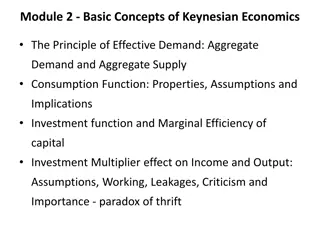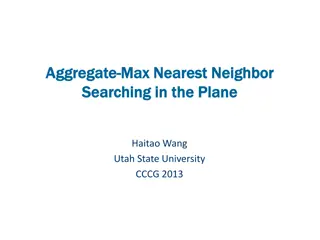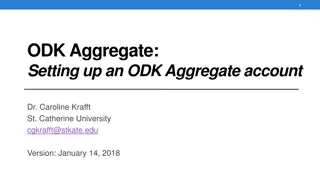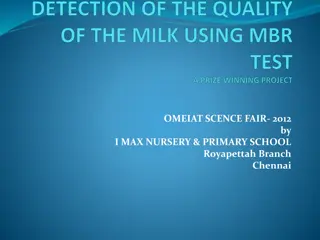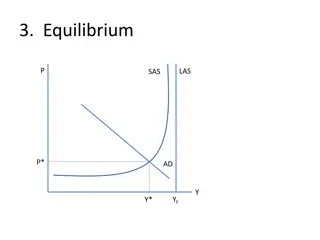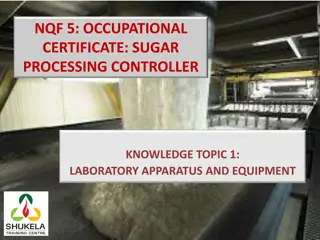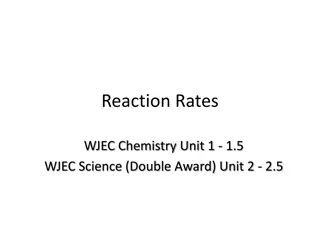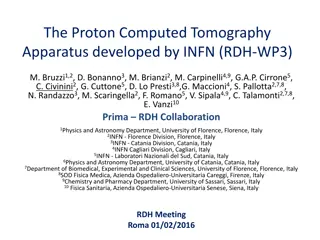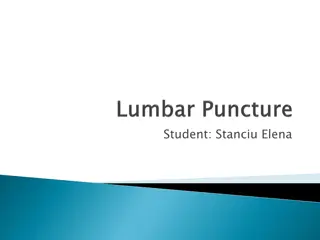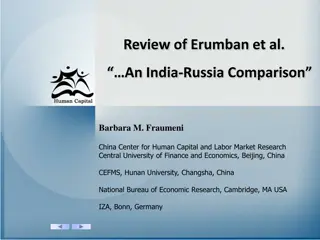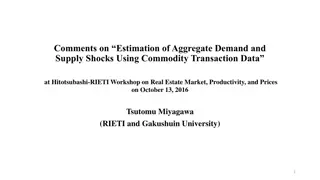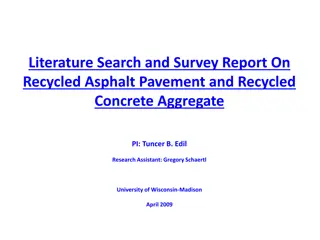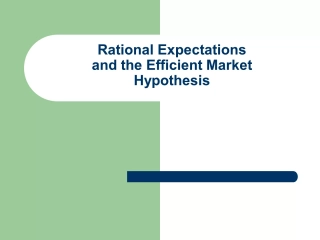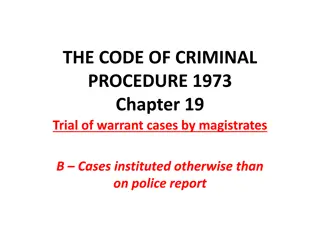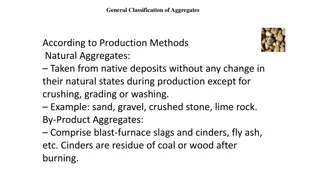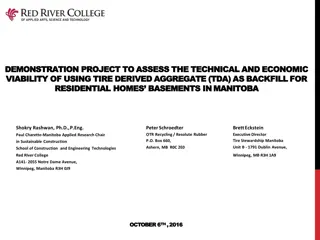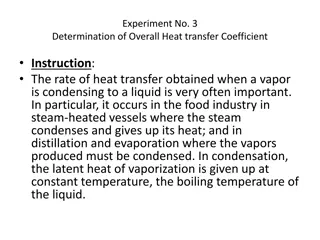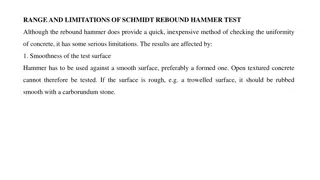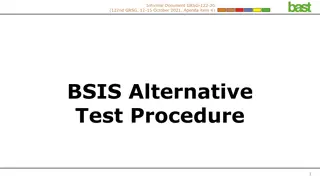Aggregate Impact Test Procedure and Apparatus Overview
The aggregate impact test is conducted to assess the resistance to impact of aggregates. This involves filling a steel cup with aggregates, tamping them, and subjecting them to impacts from a standard weight hammer. The resulting crushed aggregate is sieved to determine the impact value. The detailed procedure includes the apparatus required, such as the impact testing machine, sieves, tamping rod, balance, and oven. The process involves specific steps for filling the cup, tamping the layers, conducting the impact test, and sieving the crushed aggregate to calculate the impact value. The aim is to ensure the quality and durability of aggregates used in construction.
Download Presentation

Please find below an Image/Link to download the presentation.
The content on the website is provided AS IS for your information and personal use only. It may not be sold, licensed, or shared on other websites without obtaining consent from the author. Download presentation by click this link. If you encounter any issues during the download, it is possible that the publisher has removed the file from their server.
E N D
Presentation Transcript
-The aggregate impact test is carried out to evaluate the resistance to impact of aggregates. Aggregates passing 12.5 mm sieve and retained on 10 mm sieve is filled in a cylindrical steel cup of internal dia 10.2 mm and depth 5 cm which is attached to a metal base of impact testing machine. The material is filled in 3 layers where each layer is tamped for 25 numbers of blows. Metal hammer of weight 13.5 to 14 Kg is arranged to drop with a free fall of 38.0 cm by vertical guides and the test specimen is subjected to 15 numbers of blows. The crushed aggregate is allowed to pass through 2.36 mm sieve. And the impact value is measured as percentage of aggregates passing sieve (W2) to the total weight of the sample (W1). Aggregate impact value = (W2/W1)*100
APPARATUS Aggregate Impact Test Machine Sieves (12.5mm,10mm) Cylindrical metal measure Tamping Rod Balance (0-10kg) Oven(3000c)
PROCEDURE 1. The cylindrical steel cup is filled with 3 equal layers of aggregate and each layer is tamped 25 strokes by the rounded end of tamping rod and the surplus aggregate struck off, using the tamping rod as a straight edge. 2. The net weight of aggregate in the cylindrical steel cup is determined to the nearest gram (W1) and this weight of aggregate is used for the duplicate test on the same material.
3. The cup is fixed firmly in position on the base of the machine and the whole of the test sample is placed in it and compacted by a single tamping of 25 strokes of tamping rod. 4. The hammer is raised until its lower face is 380 mm. above the upper surface of the aggregate in the cup, and allowed to fall freely onto the aggregate 15 times, each being delivered at an interval of not less than one second. 5. The crushed aggregate is removed from the cup and sieved on 2.36 mm. IS sieve until no further significant amount passes in one minute. 6. The fraction passing the sieve is weighed to an accuracy of 0.1 g (W2)




